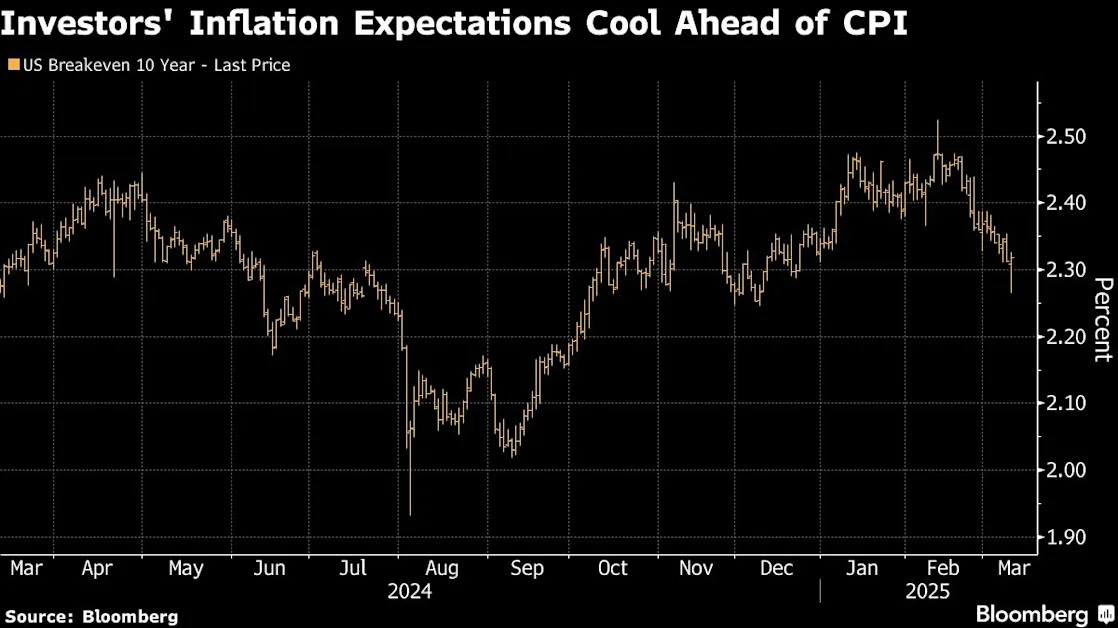(Bloomberg) — Chinese stocks are on the brink of falling to a five-year low seen in February as bearish sentiment grips the market amid a lack of earnings and economic recovery.
The CSI 300 ( 000300.SS ) Index closed down 1.2% on Monday, taking its slide from this year’s high in May to more than 13%. A further decline would take the benchmark to levels unseen since early 2019, suggesting years of policy efforts to revive the economy and prop up share prices have proved futile. The yuan weakened.
The market has been stuck in a cycle where stocks would plumb new lows after a brief rebound triggered by short-lived optimism. The government’s piecemeal approach to stimulus has failed to fix a crisis of confidence, with deflationary pressure, anemic consumption and an extended property slump combining to erode hopes of a near-term economic recovery.
“The ongoing bearishness in Chinese stocks is largely being driven by deteriorating short-term dynamics, particularly the deflationary pressures and signs of weakening consumer demand,” said Billy Leung, an investment strategist at Global X Management in Sydney. “Unless we see a significant policy shift, especially around fiscal support for social welfare or housing, it’s likely this sentiment could persist.”
The CSI 300 Index rebounded 16% from February through mid-May, as state funds purchased billions of dollars worth of exchange-traded funds and regulators clamped down on short sales and quant trades. Its slide since then is just another example of how policies have failed to address the fundamental ailments that have been hurting sentiment.
Even long-time China bulls UBS Global Wealth Management, Nomura Holdings Inc., and JPMorgan Chase & Co. have downgraded the country’s equities in recent weeks, citing concerns ranging from a drop in property-led demand to underwhelming stimulus measures and geopolitical tensions ahead of the US elections.
The equities slump has coincided with a growing consensus among the world’s largest banks that the country would miss its around 5% growth target this year. In the latest blow to sentiment, China’s consumer prices rose less than expected last month, adding to signs policymakers are struggling to get households spending.
China’s faltering economy has hit global commodity demand as well. Iron ore sank below $90 a ton for the first time since 2022 as industrial commodities faced sustained pressure from tepid Chinese demand. The onshore yuan weakened as much as 0.2% against the dollar on Monday.
To be sure, some investors say Chinese equities’ ultra-cheap valuations offer good risk-reward opportunity. The MSCI China Index is trading at less than nine times forward price-to-earnings, compared to a ratio of 24 for its emerging market rival India.
The CSI 300 is near levels seen during the February rout, when exit orders at structured products like snowball derivatives and quantitative funds exacerbated a selloff, and investors rotated into Indian stocks in a major shift in EM portfolios.
While there are some stock-specific opportunities, “even the long-term Chinese champions are not immune to the persistently weak China economic backdrop with limited visibility of improvement,” said Vivian Lin Thurston, a portfolio manager for William Blair Investment Management in Chicago. “Domestic policy trends and geopolitical risks may continue to pressure the multiples of Chinese equities structurally.”
Earnings per share for the MSCI China Index fell 4.5% from the year earlier in the second quarter, its worst in five quarters, according to data from Bloomberg Intelligence. Underscoring the contraction was weakening support from the country’s eight biggest tech firms.
Down nearly 7% this year, the benchmark CSI 300 Index ranks among the world’s worst-performing major gauges and is headed for a record fourth year of losses.
—With assistance from Winnie Hsu.





